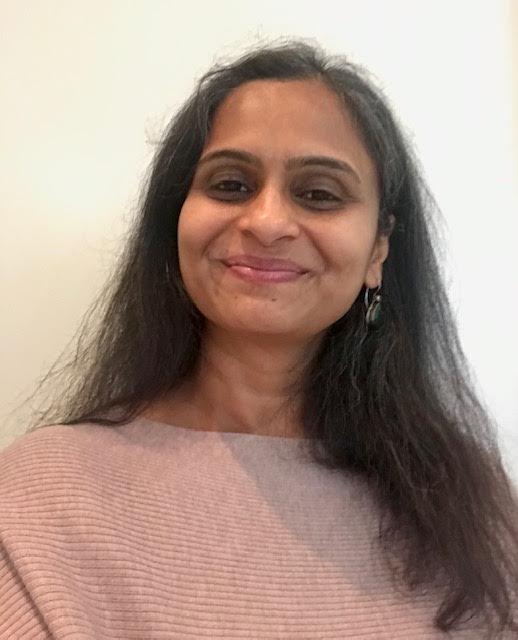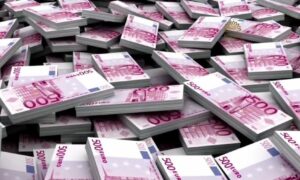(Editor’s note: This post about ASML is part of Dispatches’ Tech Tuesdays series.)
This is the story of how the global tech industry got a thrust from ASML to deal with an insurmountable obstacle – the physical limitations of microcircuitry versus the demand for ever-increasing processor speed and memory. By introducing extreme ultraviolet lithography, ASML not only demonstrated that the rapid pace of growth can continue but put the Netherlands on the global semiconductor map.
We are in the middle of an irreversible transformation of the human landscape. The way humans connect, work and live is now linked to devices. We cannot deny anymore that the Internet is the new paradigm of inclusion. Today, more than ever, we see this truth play out as the pandemic strengthens its paralyzing grip on nations. We now have to understand concepts such as artificial intelligence (AI), the Internet of things (IoT) and big data and their impact on our lives.
We come into contact with these technologies throughout our day. For example, the travel app that monitors real-time traffic to offer us faster routes is AI in action. The suggestions in the music, shopping and entertainment apps we use are drummed up by big data.
This is possible because our browsing and purchase histories are interpreted to offer us a personalized list of suggestions. The ubiquitous wristband that measures the steps we take is actually the Internet of Things in action, where sensors send back information that is then translated into insights. Beyond our personal experience, these technologies are tackling some of the planet’s urgent problems including urban air pollution, improving our food supply and even combating deadly viruses.
Semiconductors – the alchemy that turns sand into ‘gold’
At the heart of this digital globalization sits the semiconductor, a silicon chip with millions – sometimes billions – of microscopic transistors that make the magic happen. Born out of silicon, the world’s second-most abundantly found material, the semiconductor is the true alchemist – turning sand into “gold.”
The silicon goes around the world two or three times before it begins its life inside a device. Several thousand firms across the globe vie for a piece of this action. First, it is mined from quartz deposits in the Appalachian mountains. Next, the silicon powder is made into cylindrical ingots that are sliced into wafers in Japan.
A foundry, maybe in Taiwan, South Korea or China, will “write” the transistor patterns onto the wafers, turning them into high-value chips. The sophisticated writing tools can come from Japan or the Netherlands.
The design of the circuits was probably born in high-end R&D centers in the United States and the United Kingdom and involved engineers from India. These chips finally make their way into devices such as a self-driving car, your “intelligent” air-conditioner or the latest iPhone.
Moore’s Law prophecy and its effect on our lives
What sets the semiconductor industry apart from any other manufacturing industry in history is the unprecedented speed of improvements it enabled across functionality, speed, memory, power and weight. The industry was fulfilling Moore’s Law. In the late 1960s, Intel co-founder Gordon Moore prophesied that the number of transistors on an integrated circuit chip would increase every 18 months or so and the price would decrease by half. Wading through the jargon, what it means is this: the devices using the chips will be twice as fast and store much more data at half the cost and size.
Why do we need to know this? Well, the end of the prophecy meant that we would no longer see cooler mobile phones as rapidly as we have in the past years. Seemingly endless data storage, richer photographs and videos and intuitive virtual assistants will stop delighting us as often as they now do. And mobile phones are just one of the gazillion devices that became smarter and smaller. Valued at USD 3 trillion, the global technology industry is often called “the third-largest economy” in the world, second to the U.S. and China in GDP terms. Any ripple in this industry will have seismic effects on all our lives.
ASML extends Moore’s Law by introducing a mind-bending, miniaturization technology
After nearly 50 years of unfettered development, the race to make smaller and smarter devices was hitting a wall. Global chip-makers were running out of ways to cram more transistors onto a chip, slowing down research and development of new devices. The ominous end of Moore’s Law seemed inevitable, and the semiconductor industry was faced with an insurmountable obstacle.
The remedy came from ASML, a company tucked away in the Netherlands. More than a decade’s worth of research in physics, chemistry and material science had rendered the most advanced mechanism for “writing” on chips possible.
In 2017, ASML introduced the mind-boggling process of Extreme UltraViolet (EUV) lithography, which made Moore’s Law possible for another decade, at least. The global tech industry let out a resounding cheer that resonated in every corner of the world.
The process that uses light rays to etch the transistors on a chip is called photolithography. The light rays in EUV lithography had been shrunk by almost 14 times, from 193 nm to 13.5 nm. As an ASML executive put it, this is similar to changing your writing instrument from a marker pen to a fineliner.
I would like to extend the writing analogy here. Stay with me. Compare miniaturization of transistors with that of writing with a fine tip pen. Over the years, this pen’s tip has gotten really, really small in order to increase the “word length” on the chip. Imagine a text with billions of words on it. That is your average semiconductor chip.
The size of the pen tip (a ray of light) is denoted in nanometers (nm) today. ‘Nano’ is derived from the Greek word ‘dwarf’ and a nanometer is one-billionth of a metre. A strand of hair is 100,000 nm thick. Your typical bacteria is 200 nm wide. The newly launched Apple iPhone 12 housing the world’s fastest mobile chip was made with a 5 nm process, using ASML’s EUV lithography. You are beginning to understand the tiny scale now, right?
Thus, the EUV has become a pivot for the semiconductor industry. It is vital to understand that this act by ASML is a tough one to follow, given the years of research needed to work with the extreme ultraviolet light ray. Therefore, there are no competitors in sight yet. ASML’s vision to roll out EUV technology began in the 1980s, fueled by researchers in the U.S. and Japan who showed its feasibility.
About 2006, an industry consortium of semiconductor giants prompted ASML to create the rudimentary EUV tools. Harnessing the power of EUV light called for paradigm shifts that demanded time, money and superhuman efforts.
ASML swapped air with a high vacuum environment, brought in multiple layers of mirrors instead of lenses to guide the light rays and used vaporized droplets of tin to generate the EUV light itself.
To enable EUV technology, ASML built long-term collaborations with chipmakers, research partners and strategic suppliers to harness EUV light. In 2017, ASML began to ship EUV machines for large-scale industrial manufacturing. By 2019, the first commercial chips made by EUV light hit the consumer markets.
ASML hopes to ship a next-gen EUV system to support 3nm in 2023.
EUV Lithography catapulted ASML as a kingmaker on the global semiconductor stage. The world’s leading chip-makers, who direct the course of global tech adoption, are now reliant on ASML. This includes Intel in America, Samsung in South Korea and Taiwan Semiconductor Manufacturing Company (TSMC), the Apple iPhone manufacturer. ASML has not only shown the world that Moore’s Law is alive and kicking but has firmly established the Dutch position at the table for tech superpowers.

About the author:
Latha Anand is a passionate communications professional with more than 15 years’ experience in journalism and public relations. Latha thrives on crafting narratives that engage the audience, mobilize opinion and motivate action. When she is not tackling a story, you can find her biking in Utrecht’s Maxima park or fussing over her Persian cats. Her secret sauce for friendship is her delicious Indian cooking.
Also see Latha’s Spouse Trail website here.
Read more about ASML on Dispatches here.
Read more about Eindhoven’s tech scene here.
Read more here about Eindhoven’s expat community.














